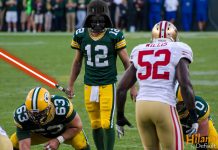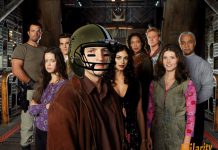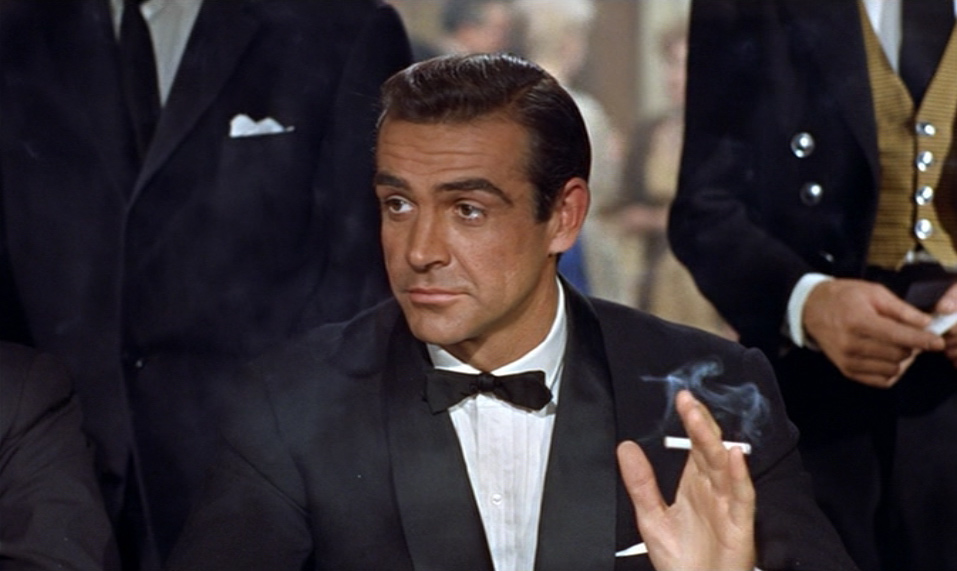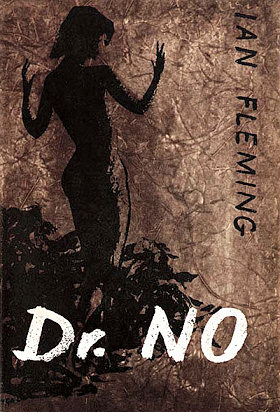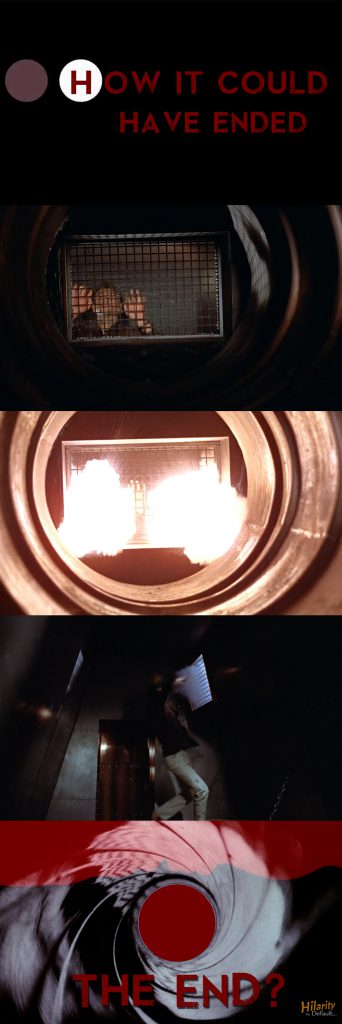When one thinks of the classic James Bond movies, a few iconic scenes are usually on the forefront of those memories such as the witty laser exchange in Goldfinger…
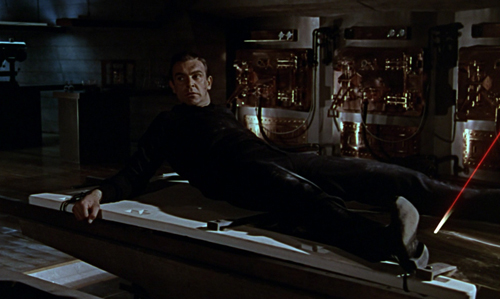
…the Aston Martin DB5 featured in both Goldfinger and Thunderball…

…or the fantastic “Little Nellie” autogyro of You Only Live Twice.
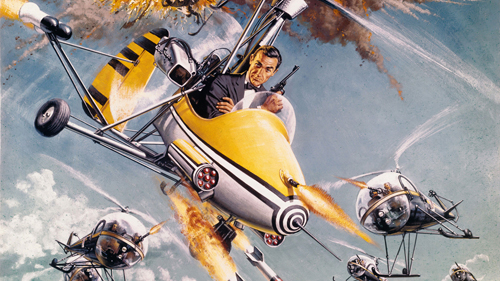
Dr. No not only has the distinction of being the very first official James Bond film but it also features two such sequences which have forever been burned on the consciousness of Bond enthusiasts and film lovers all over the world. One, of course, is Bond’s famous introductory scene where he dryly acquaints himself as “Bond. James Bond.” The other, well, I’ll let the following picture speak for itself.

Dr. No (1962) |
Dr. No has Bond (Sean Connery) investigating the mysterious disappearance of a British operative in Jamaica who had been pursuing the cryptic Dr. No (Joseph Wiseman) and his foreboding Caribbean Island of Crab Key which local legend asserts to be guarded by treacherous dragon. No sooner has Bond landed in Jamaica than he finds himself evading death from devious geologists, poisonous spiders, and duplicitous office secretaries. Each attempt only further prompts Bond to take a daring journey to Dr. No’s lair with the unlikely aid of a Jamaican boat captain named Quarrel, beautiful shell diver Honey Rider (played by the striking Ursula Andress), and CIA agent (and women’s sunglasses enthusiast) Felix Leiter (Jack Lord).
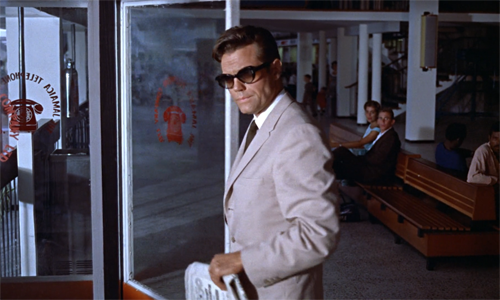
Once Bond arrives in Jamaica, the remainder of the film can best be divided into three sections – Bond’s mainland investigation, his adventures on Crab Key (which has shades of Swiss Family Robinson albeit with machine guns and motorized dragons), and his face-off in Dr. No’s base. While all three have their highs and lows in terms of pacing and special effects, only the final third starts showing a few rips in the seams – and that’s mostly due to the ridiculousness of the costume design and the ease of Bond setting Dr. No’s nuclear facility to meltdown.

Dr. No is more subdued than most of the other Bond films and plays off as more of a detective story for most of its runtime; however, in comparison to the later excesses of hovercraft gondolas (Moonraker) and invisible cars (Die Another Day), it is almost refreshing to see a Bond film where he relies on classic spy tricks (such as talcum powder on his briefcase to detect intrusion or using a bamboo pole to breathe underwater) rather than on extraordinary gadgets that are almost preternaturally fit every scrape he happens to get into.
In the same vein, the James Bond of Dr. No is more human and vulnerable compared to many of his later iterations. He gets battered and bloodied up towards the film’s climax, skulking through Dr. No’s lair in a ripped T-shirt and rags à la John McLane in 1988’s Die Hard. When he finds a deadly spider in his bed, he is visibly terrified (partly due to Sean Connery’s own phobia of spiders) and he verbally admits to Honey at one point that he is scared – an admission that you would hardly expect from the herculean visage of 007 in most of his films (especially in the 1970’s).
Although often accused of being very slow and slim on excitement, the above examples mark Dr. No as probably the grittiest illustration of Bond on film until the advent of Timothy Dalton and Daniel Craig‘s take on the character decades later. Sean Connery was a brilliant masterstroke of casting and it is easy to see why he is still considered to be the best James Bond. While there a times where his performance may be a little awkward such as his quick rushes of dialogue at some points in the film, his very presence is compelling, eschewing a subtle magnetism that elevates the film beyond a silly spy fantasy.
The other characters play to some of Dr. No‘s best strengths. Honey Ryder is as strong as she is beautiful and when she brandishes her knife, you get the feeling that she knows how to use it! She is such an attractive addition that it is easy to overlook that she serves little to no purpose to the course of the story.
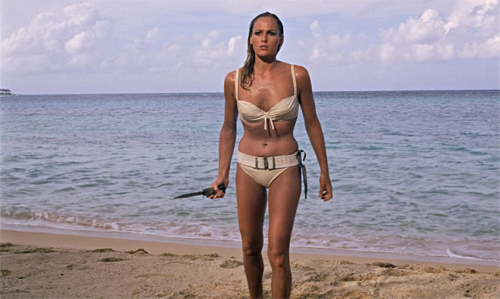
Quarrel has often been criticized for taking a subservient role to Bond (especially when Bond cringingly tells him to fetch his shoes), but he is nevertheless one of the most memorable characters of the early 007 films. Though he has funny moments, he does have his fair share of badass scenes such as one where he is alarmingly slashed in the face with a broken camera bulb only to follow it up with a nonplussing smile. When he meets a gruesome fate later in the film, it feels as much a gut punch to the audience as it feels to a distinctly affected Bond.
As for Dr. No himself, although he is not seen in person until the last twenty minutes of the film, his enigmatic presence is felt throughout the film. The film does a great job building up the character with his distinctive voice and shadowy figure teasing his final reveal which, to the film’s credit, lives up to expectation (a trick which would be used again to tease Bond’s archnemesis Blofeld in the following films). While No’s fisticuffs with Bond may be a bit underwhelming, his cold, unblinking, monotonous persona resonates strongly and sets the mold for all Bond villains to follow.
As for Felix Leiter, well, he doesn’t do much except wear those ridiculous sunglasses and act as a soundboard for exposition. Jack Lord does his best with his minimal screen-time and it would have been interesting to see him continue in the role. Of all the actors to play Felix, he is one of the few to believably give the impression to be Bond’s American equal and it is disappointing to have him sidelined after a fair build up.
Ian Fleming’s Dr. No |
What’s particularly unique about this early Bond film adaptation is that it skirts the more outlandish elements of Ian Fleming’s original novel rather than amplifying them as most of the following films would do thus keeping the film version a bit more grounded – despite the flame-throwing diesel dragon.

While the novel’s plot is largely similar to the film product, there are a few key deviations. For instance, the character of Felix Leiter is not the book which probably explains his uselessness throughout the movie. S.P.E.C.T.R.E., the evil organization that dominates most of the early Bond films, isn’t featured in the novel either as Dr. No works specifically for the Russians.
Honey Ryder’s (named Honeychile Rider in the book) beauty is marred by a broken nose due to a traumatic rape in her youth and her goal in collecting shells is so that she can afford to fix it via plastic surgery. Her famous seaside entrance is also much more revealing as she emerges nude from the ocean with Fleming very oddly pointing out that she has a bum built like a boy’s. Seriously? That’s the last analogy I would expect to crop up when describing a beautiful women’s derriere.

Perhaps the most significant differences are found towards the end of the novel. In the film, Bond is beat up and locked in a cell where he is able to escape via a ventilation shaft. After overloading the nuclear reactor and defeating Dr. No by letting him boil alive in a radiation cooling vat, he and Honey escape Crab Key in a boat. In the novel, Dr. No tortures Bond by guiding him through a terrifying obstacle course which includes poisonous spiders and hand-to-tentacle combat with a giant squid!
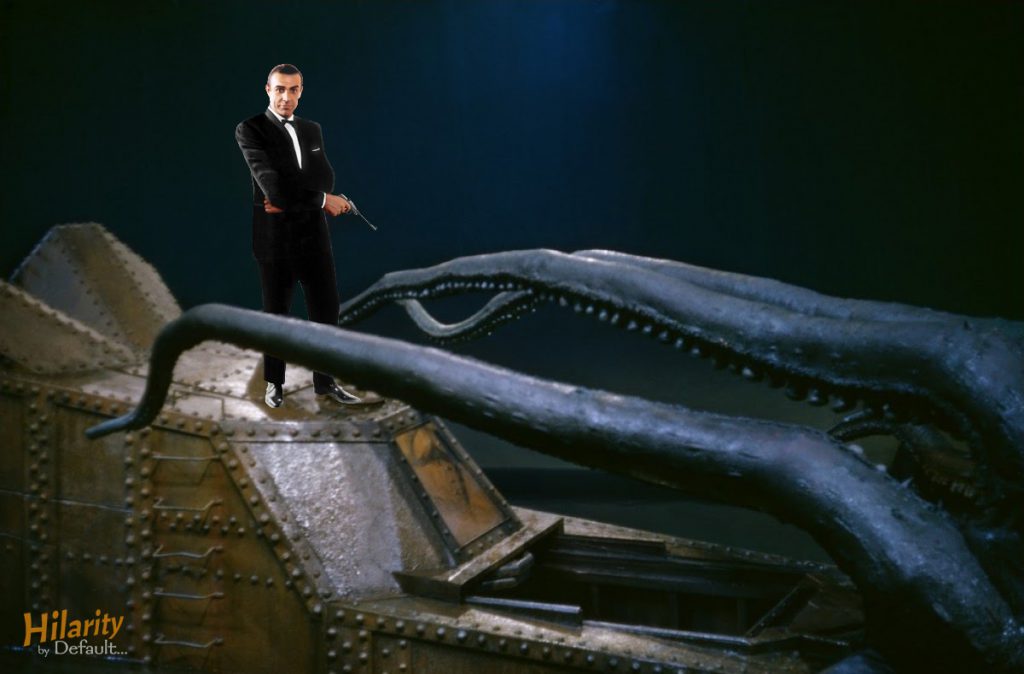
After escaping the obstacle course, Bond defeats Dr. No by burying him in guano and riding to safety with Honey inside the motorized dragon of all things!
It’s funny to think that, in retrospect, Ian Fleming originally wrote Dr. No as a screenplay to a never-produced James Bond television series. Coming off the blandness of Climax’s! “Casino Royale” episode, it’s safe to say that we can be thankful that it didn’t turn out that way. I’d hate to imagine how it would have turned out otherwise.

The Shapes and Sounds of Dr. No |
Although Dr. No didn’t open with a mini-Bond adventure or teaser (in fact, it is the only Bond film that doesn’t have one), it did set the standard of featuring an elaborate animated credit sequence. This wasn’t unique at the time as most films of the era sported similar title sequences such as The Pink Panther, A Fistful of Dollars, Charade…

…and it became a tradition that has outlasted the trend to become a signature of the series. Heck, if you think about it, many films nowadays save their credits for the end with many of them, such as The Dark Knight, going a step further by not even revealing the title until after the film has already concluded (a trend that I happen to find incredibly annoying).
With that said, Dr. No‘s opening credit sequence is a jumbled mess and remains one of the weakest in the series. It starts off with the James Bond theme playing as different shapes and circles unveil the credits before seguing into a silhouetted Jamaican dance party…

…and concludes with a rendition of “Three Blind Mice” as three of the film’s henchmen, under the guise of being blind, stroll through Jamaica. It’s all over the place and, though the animation may be interesting, the varying styles clash with discord.
The sequence would have been much more effective if it had simply stuck to its initial introduction with the James Bond theme – a theme that remains one of the greatest examples of excellent cinematic scores to this day. What more can be said about it that hasn’t been said before? It perfectly encapsulates everything about James Bond and, perhaps with the exceptions of Indiana Jones and Jaws, no other film theme has ever been as strongly synonymous with a single character. A James Bond film would feel like an empty shell without it – the perfect example being the unofficial Never Say Never Again. Although the film had all the elements of a Bond movie – including Sean Connery returning as 007 – without the James Bond theme it felt like it was missing its very soul.
Final Thoughts |
Dr. No is a worthy, though at times atypical, introduction to the James Bond film franchise. Although some of the effects are dated and the pace is drawn out a bit, it still set the standard for all the films to follow, blending the spy thriller with a dash of fantasy. Sean Connery’s presence is unprecedented and although his performance may be stilted at times, by his next outing in From Russia with Love he would find that perfect balance that endeared him to billions. Overall, a negligibly flawed and worthy debut for 007.
Random Afterthoughts… |
James Bond’s legendary method of introducing himself as “Bond. James Bond,” is hardly unique in the world of Dr. No as it turns out that a couple of other characters share this particular eccentricity. Bond isn’t even the first one to use it! Rather, he first says it in reply to another character introducing herself as “Trench. Sylvia Trench.” Even Honey Ryder uses the motif when she first acquaints herself with Bond.
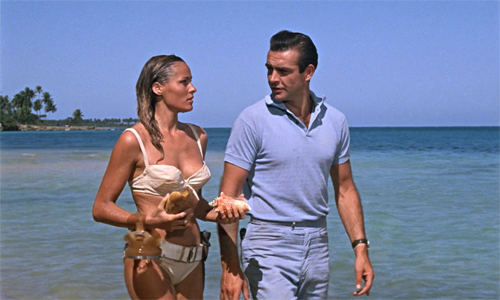
In an odd scene, Bond knocks on the door of the deceitful Miss Taro to find her clad in only a couple of towels. Excusing herself to answer the telephone, he keeps one of her towels and proceeds to, um, take a bite out of it? I guess it was implied that he was wiping off her lipstick, but it plays out in quite a creepy way.
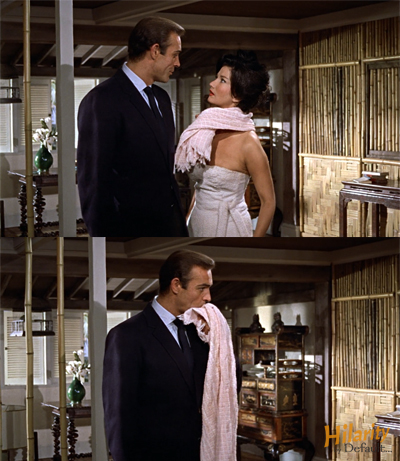
While Bond, Felix, and Quarrel are drinking at Puss Feller’s club, there is a particularly overenthusiastic dancer who I think is either having a seizure…

The artist of the original Dr. No poster must have suffered from the most extreme version of color blindness in existence!

James Bond will Return
in
From Russia with Love (1963)
Join 007 on the 7th of next month! For more, click here.











